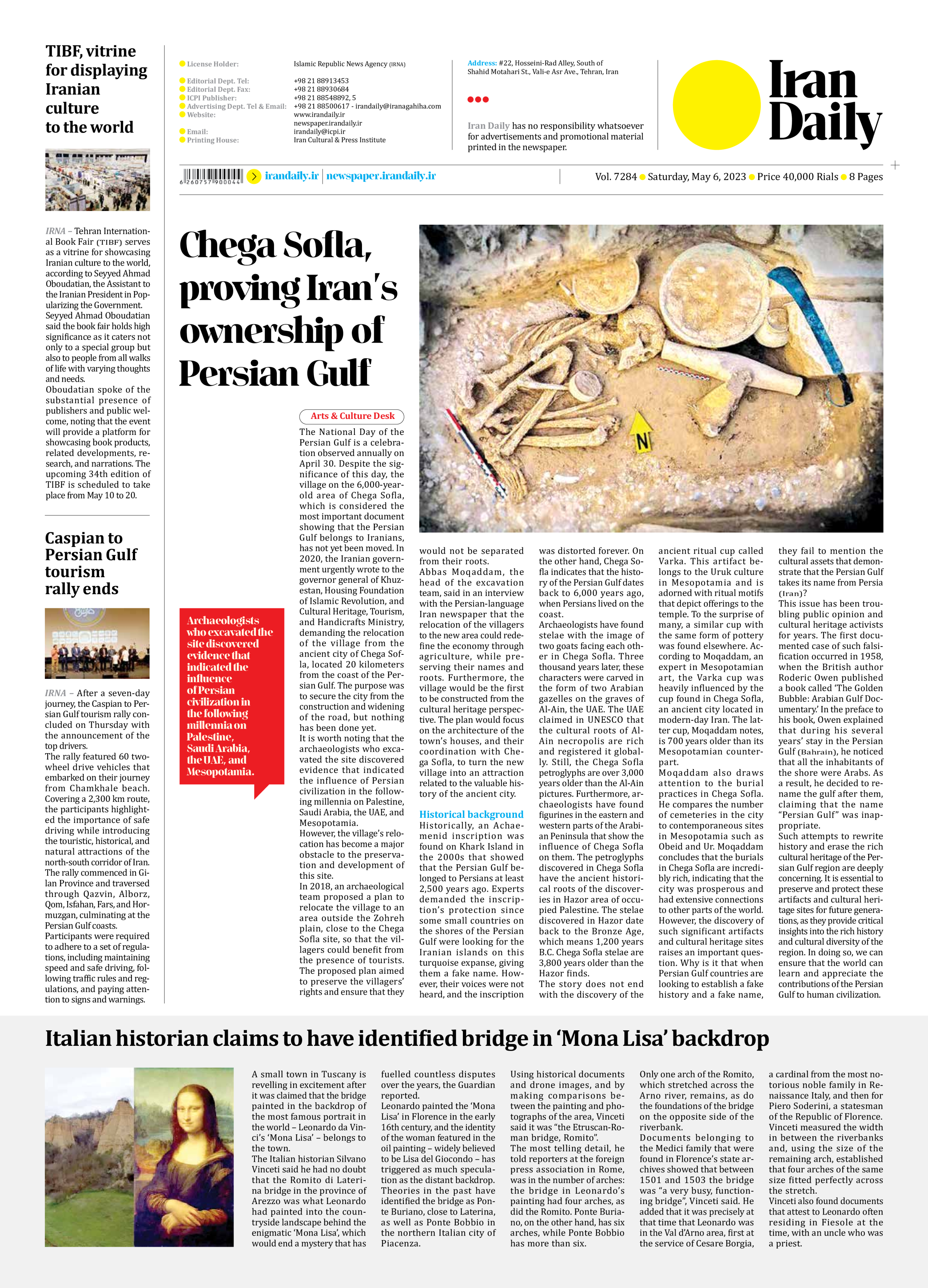
Chega Sofla, proving Iran’s ownership of Persian Gulf
The National Day of the Persian Gulf is a celebration observed annually on April 30. Despite the significance of this day, the village on the 6,000-year-old area of Chega Sofla, which is considered the most important document showing that the Persian Gulf belongs to Iranians, has not yet been moved. In 2020, the Iranian government urgently wrote to the governor general of Khuzestan, Housing Foundation of Islamic Revolution, and Cultural Heritage, Tourism, and Handicrafts Ministry, demanding the relocation of the village from the ancient city of Chega Sofla, located 20 kilometers from the coast of the Persian Gulf. The purpose was to secure the city from the construction and widening of the road, but nothing has been done yet.
It is worth noting that the archaeologists who excavated the site discovered evidence that indicated the influence of Persian civilization in the following millennia on Palestine, Saudi Arabia, the UAE, and Mesopotamia.
However, the village’s relocation has become a major obstacle to the preservation and development of this site.
In 2018, an archaeological team proposed a plan to relocate the village to an area outside the Zohreh plain, close to the Chega Sofla site, so that the villagers could benefit from the presence of tourists. The proposed plan aimed to preserve the villagers’ rights and ensure that they would not be separated from their roots.
Abbas Moqaddam, the head of the excavation team, said in an interview with the Persian-language Iran newspaper that the relocation of the villagers to the new area could redefine the economy through agriculture, while preserving their names and roots. Furthermore, the village would be the first to be constructed from the cultural heritage perspective. The plan would focus on the architecture of the town’s houses, and their coordination with Chega Sofla, to turn the new village into an attraction related to the valuable history of the ancient city.
Historical background
Historically, an Achaemenid inscription was found on Khark Island in the 2000s that showed that the Persian Gulf belonged to Persians at least 2,500 years ago. Experts demanded the inscription’s protection since some small countries on the shores of the Persian Gulf were looking for the Iranian islands on this turquoise expanse, giving them a fake name. However, their voices were not heard, and the inscription was distorted forever. On the other hand, Chega Sofla indicates that the history of the Persian Gulf dates back to 6,000 years ago, when Persians lived on the coast.
Archaeologists have found stelae with the image of two goats facing each other in Chega Sofla. Three thousand years later, these characters were carved in the form of two Arabian gazelles on the graves of Al-Ain, the UAE. The UAE claimed in UNESCO that the cultural roots of Al-Ain necropolis are rich and registered it globally. Still, the Chega Sofla petroglyphs are over 3,000 years older than the Al-Ain pictures. Furthermore, archaeologists have found figurines in the eastern and western parts of the Arabian Peninsula that show the influence of Chega Sofla on them. The petroglyphs discovered in Chega Sofla have the ancient historical roots of the discoveries in Hazor area of occupied Palestine. The stelae discovered in Hazor date back to the Bronze Age, which means 1,200 years B.C. Chega Sofla stelae are 3,800 years older than the Hazor finds.
The story does not end with the discovery of the ancient ritual cup called Varka. This artifact belongs to the Uruk culture in Mesopotamia and is adorned with ritual motifs that depict offerings to the temple. To the surprise of many, a similar cup with the same form of pottery was found elsewhere. According to Moqaddam, an expert in Mesopotamian art, the Varka cup was heavily influenced by the cup found in Chega Sofla, an ancient city located in modern-day Iran. The latter cup, Moqaddam notes, is 700 years older than its Mesopotamian counterpart.
Moqaddam also draws attention to the burial practices in Chega Sofla. He compares the number of cemeteries in the city to contemporaneous sites in Mesopotamia such as Obeid and Ur. Moqaddam concludes that the burials in Chega Sofla are incredibly rich, indicating that the city was prosperous and had extensive connections to other parts of the world.
However, the discovery of such significant artifacts and cultural heritage sites raises an important question. Why is it that when Persian Gulf countries are looking to establish a fake history and a fake name, they fail to mention the cultural assets that demonstrate that the Persian Gulf takes its name from Persia (Iran)?
This issue has been troubling public opinion and cultural heritage activists for years. The first documented case of such falsification occurred in 1958, when the British author Roderic Owen published a book called ‘The Golden Bubble: Arabian Gulf Documentary.’ In the preface to his book, Owen explained that during his several years’ stay in the Persian Gulf (Bahrain), he noticed that all the inhabitants of the shore were Arabs. As a result, he decided to rename the gulf after them, claiming that the name “Persian Gulf” was inappropriate.
Such attempts to rewrite history and erase the rich cultural heritage of the Persian Gulf region are deeply concerning. It is essential to preserve and protect these artifacts and cultural heritage sites for future generations, as they provide critical insights into the rich history and cultural diversity of the region. In doing so, we can ensure that the world can learn and appreciate the contributions of the Persian Gulf to human civilization.







